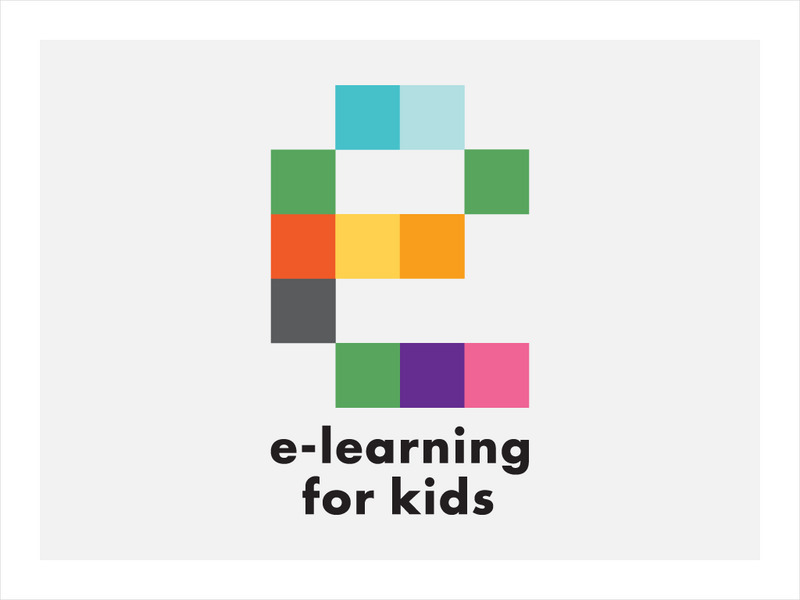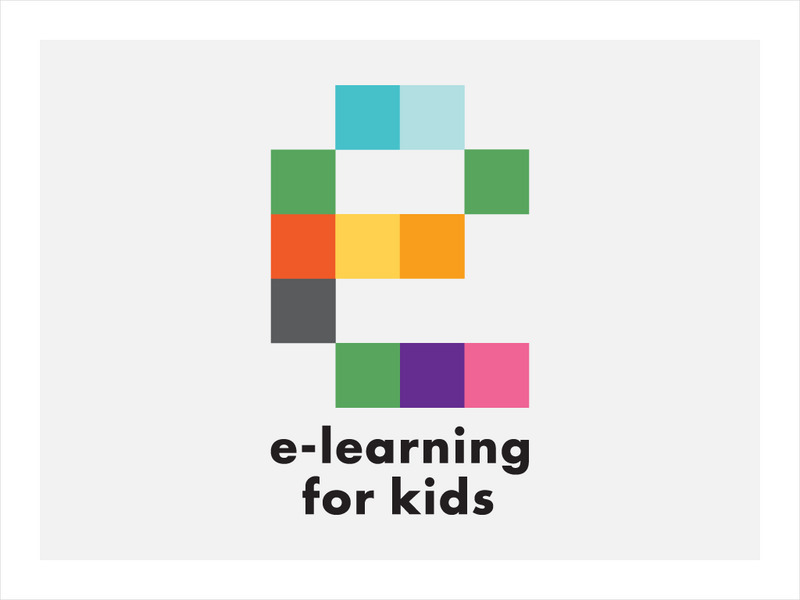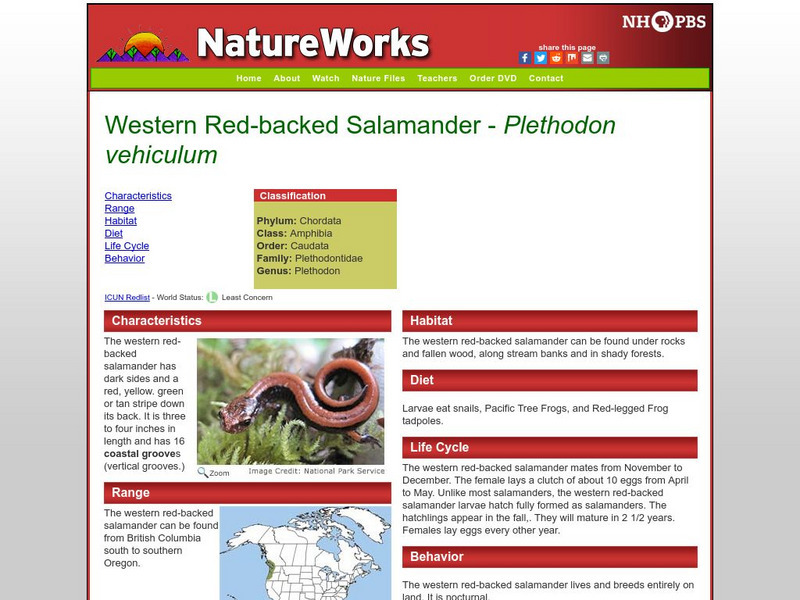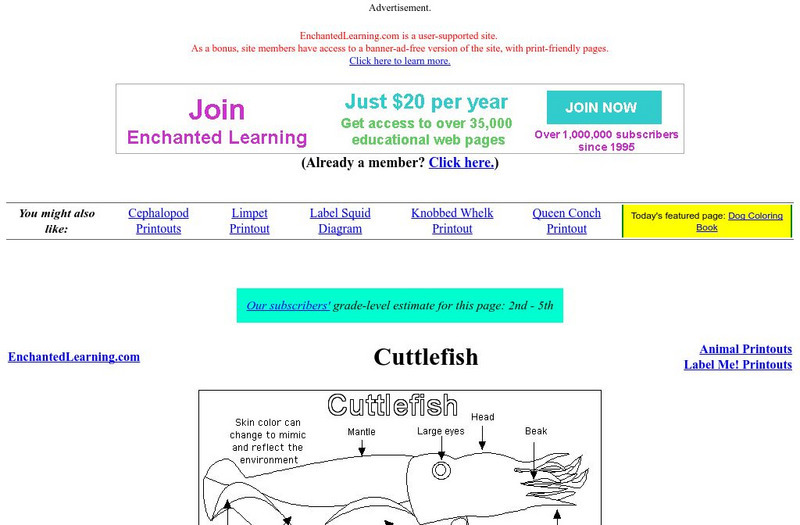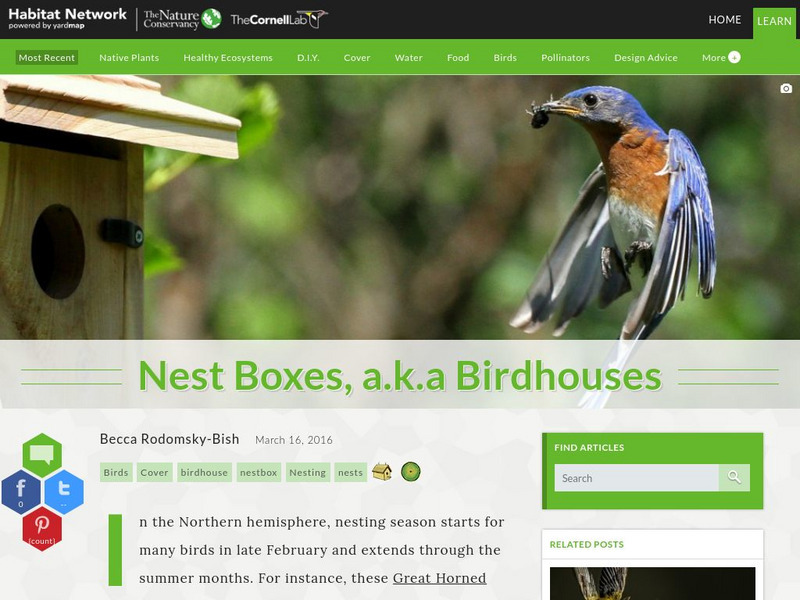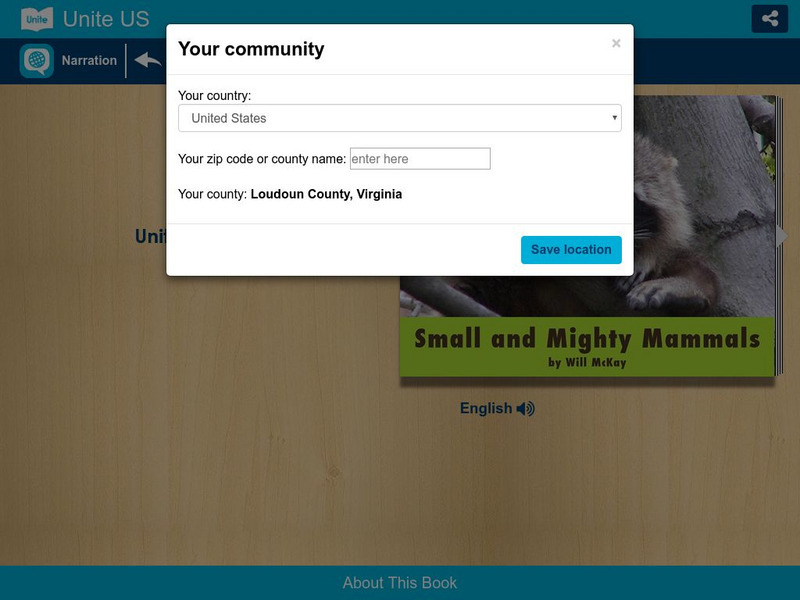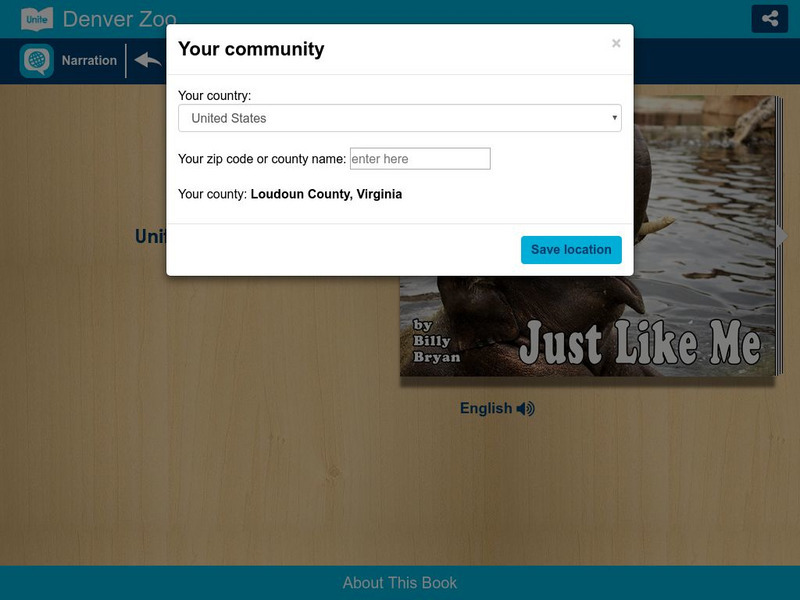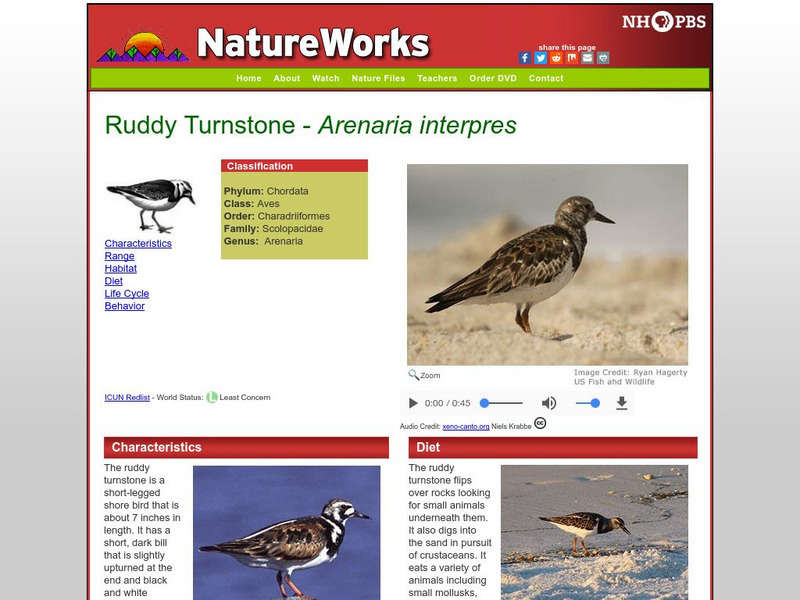Hi, what do you want to do?
E-learning for Kids
E Learning for Kids: Science: Center of the Atlantic Ocean: Animals and Their Senses
Captain Ed Smith and his dog, Rocco, are exploring all the amazing senses animals have. Join him and discover with them.
E-learning for Kids
E Learning for Kids: Science: Christmas Island: What Do Animals Eat?
This lesson teaches students the three different types of diets animals may have - herbivore, carnivore, and omnivore.
Sea World Parks & Entertainment
Sea World: Marine Mammal Training
Learn how SeaWorld trains its marine animals.
Sea World Parks & Entertainment
Sea World: Animal Training: Animal Behavior & Learning
Details how marine mammals at Sea World learn by different techniques, including operant conditioning, positive reinforcer, and others.
PBS
Nh Pbs: Nature Works: Florida Panther
Learn more about the Florida Panther through this educational site. Students will find information about habitat, life cycle, diet, behavior and more of this small cat.
PBS
Nh Pbs: Nature Works: Western Red Backed Salamander
Learn more about the Western Red-Backed Salamander through the exploration of this resource. This site features information ranging from characteristics and range to life cycle and diet.
Unique Australian Animals
Unique Australian Animal: Turquoisine Grass Parrot
Enjoy the images of this beautiful bird while learning more about its characteristics and lifestyle.
PBS
Pbs Learning Media: Tracking Polar Bears
In this interactive activity adapted from the USGS Alaska Science Center, students will track the movements of a polar bear as it migrates across the changing Arctic sea ice and compare the paths of four different polar bears.
Alabama Learning Exchange
Alex: Nocturnal Animals Lesson #1
This lesson can be part of a two-week integrated thematic unit on nocturnal animals. During this lesson, students will be introduced to nocturnal animals. They will have an opportunity to navigate web sites to learn more about nocturnal...
Environmental Education for Kids
Eek!: Teacher Resources: "Deer Talk" Activity
In this activity, students will learn to recognize how deer use non-verbal communication for mutual protection and interaction within a group and the importance of this language to the survival of the group.
PBS
Pbs Learning Media: Animal Shelter Photographer
In this WILD TV segment, a photographer helps find homes for animals up for adoption.
Other
K 3 Learning Pages: Reptiles and Amphibians
Come and discover more about reptiles and amphibians when you explore this awesome resource. This site is filled with useful links.
Enchanted Learning
Enchanted Learning: Cuttlefish
Explore the world of the cuttlefish, a unique cephalopod. Students will gain a greater understanding of this mollusk through fun facts, information on the anatomy, diet, predators and more at this site.
BBC
Bbc Science & Nature: Platypus
Have you ever seen a platypus? This site has action photos and a detailed fact sheet to learn more about the egg-laying mammal.
Scholastic
Scholastic: Ocean Life
Learn about leatherback turtles and dusky dolphins with the Earthwatch research teams in Costa Rica and New Zealand. Choose which animal you would like to learn more about then read field reports, meet a researcher, become a researcher...
Canadian Wildlife Federation
Hinterland Who's Who: Muskox
Get the facts about the muskox. Besides finding a detailed description of this resident of Canada?s arctic tundra, you?ll also learn about some of its unique facts and characteristics. Also included in this Mammal Fact Sheet on the...
Cornell Lab of Ornithology
Habitat Network: Nest Boxes, a.k.a Birdhouses
Learn about the importance of bird house boxes in backyard habitats.
Unite for Literacy
Unite for Literacy: Animals: Small and Mighty Mammals
Learn about some of the special skills some small mammals have. Includes audio narration in Turkish and English, with text in English.
Unite for Literacy
Unite for Literacy: Denver Zoo: Conservation: Just Like Me
Learn about the habits of different zoo animals and how they are like human children. Includes audio narration in nine additional languages with text in English.
Songs for Teaching
Sciences Songs All Day Long: Nocturnal Animals
By listening to this song your students will learn all of the animals that are awake during the night. They will equate the sounds they hear at night with the animals and their sounds in the song.
PBS
Nh Pbs: Nature Works: Tactile Communication
Good overview of how animals communicate through tactile communication. Includes examples of different animals.
PBS
Nh Pbs: Nature Works: American Black Bear
Learn more about the American Black Bear through this informative resource. Gain a new perspective of this mighty animal when you learn more about its' habitat, behavior, characteristics, and more.
PBS
Nh Pbs: Nature Works: Ruddy Turnstone
Delve into the world of the Ruddy Turnstone. Learn more about this specific type of sandpiper through this educational site. This source covers characteristics, life cycle, behavior, habitat, diet and range of this unique aquatic bird.
Alabama Learning Exchange
Alex: Surviving in the World!
After learning about the survival traits of the chameleon, students will work in groups to research the survival traits of other animals on the Internet and will create a slide show using the collected information to share with the...





